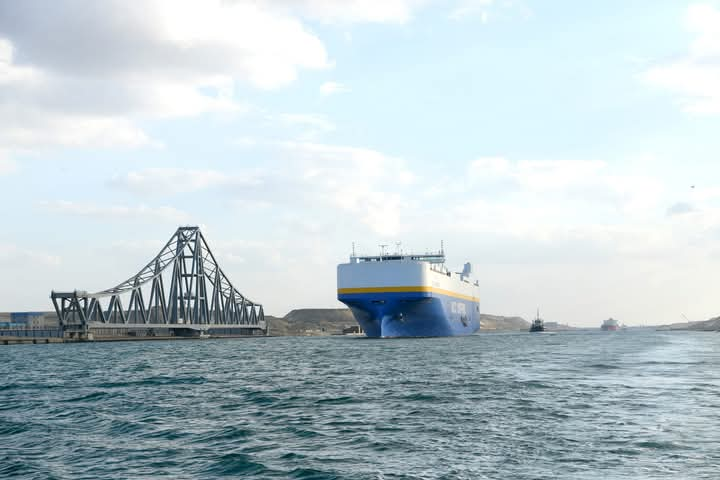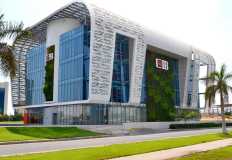
The Suez Canal witnessed the maiden voyage of the car carrier AICC HUANGHU, sailing within the southern convoy from Shanghai, China, to Dierniz, Turkey.
The 199-meter long, 38-meter wide car carrier, sailing under the Marshall Islands flag, has a draft of 10 meters and a carrying capacity of 7,000 car equivalents. It is currently transporting 4,202 vehicles. This vessel, the first of three similar ships planned by the Chinese shipping line AICC for operation between Asia and Europe via the Suez Canal, is equipped with eco-friendly technology, including a dual-fuel engine capable of running on liquefied natural gas.
Lieutenant General Osama Rabie highlighted the increasing
preference among ship owners and operators for the Suez Canal, as evidenced by
the passage of vessels like this car carrier. He emphasized the canal's
strategic importance to global trade, offering significant savings in time,
cost, and fuel consumption, making it the optimal and fastest route for
maintaining global supply chains. General Rabie further explained that the Suez
Canal shortens the journey between Shanghai Port, China, and Dierniz Port,
Turkey, by approximately 45%. While the route via the Cape of Good Hope covers
about 14,600 nautical miles, the Suez Canal route is only about 8,071 nautical
miles, a difference of approximately 6,529 nautical miles. This translates to
an 18-day reduction in travel time, resulting in substantial savings in
operational costs, fuel, and associated carbon emissions.
Captain Huang Yan Fei confirmed the Chinese shipping line's choice of the Suez Canal, citing its position as the shortest route between Europe and Asia. He pointed out that the Cape of Good Hope route involves significantly longer distances and often encounters adverse weather, leading to increased fuel consumption and negative impacts on the marine environment.





